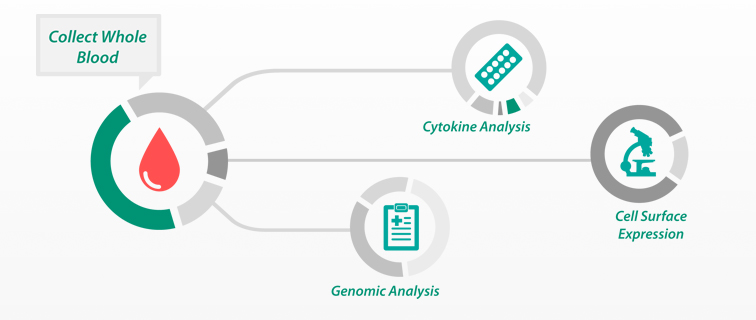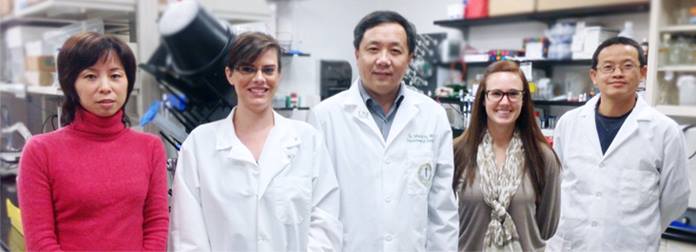Research

Introduction
The Division of Vascular and Endovascular Surgery at the University of South Florida Morsani College of Medicine has expanded their research activities this year. In addition to the already strong clinical research heritage, the addition of basic and translational research activities as well as expansion of the simulation/education research program makes for a very comprehensive research portfolio.
These research activities involve all the USF vascular faculty and are available for the students, residents, and fellows to participate based on their specific interest. The overall goal is to establish one of the best academic programs in vascular surgery in the country.
Direction of Current Translational Research Interest
Genomic and Proteomic Determinants of Lower Extremity Revascularization Failure.
This translational initiative combines both the basic science of systemic inflammation and vascular wall biology with a clinical commitment to limb salvage for patients with peripheral arterial disease (PAD). The overall hypothesis is that the baseline systemic inflammatory state, or an exaggerated response following vascular intervention influences the local biology responsible for vascular repair and adaptation. This response is likely not uniform in all patients, but rather, is modulated by either some preoperative genomic predisposition or differential leukocyte activation in the innate immune response following injury. To test this hypothesis, a human research initiative is underway examining the clinical, genomic and molecular mechanisms of lower extremity revascularization failure. Patients undergoing lower extremity infrainguinal angioplasty and/or stent placement, or vein bypass grafting, are being analyzed as part of a prospective, longitudinal clinical study to define the genomic and proteomic predictors of revascularization failure. Specifically, detailed clinical outcomes data is coupled with rigorous molecular studies to achieve the following aim:
To determine systemic inflammatory gene expression and/or cytokine biomarker signatures prior to and following vascular injury that predict clinical outcome following lower extremity angioplasty/stenting or vein bypass surgery.
The study protocol outlines 300 patients (150 enrolled to date) undergoing either percutaneous lower extremity angioplasty/stenting or vein bypass surgery followed prospectively to evaluate success of intervention based on both objective clinical and functional measurements of extremity blood flow and exercise tolerance, as well as on assessment of improvements in symptomatologic and sociopsychological quality of life endpoints. Blood is obtained pre-intervention, immediately post-revascularization, and at defined intervals postoperatively out to 12 months of follow-up. Genomic analysis of enriched peripheral blood monocytes is performed using the novel Affymetrix GGH2 GeneChip™ system. Multiplex proteomic analysis of circulating inflammatory cytokines is determined based on the Miilipore Milliplex™ platform. Circulating blood monocytes and endothelial cell lineages are also phenotyped using flow cytometric analysis.Advanced bioinformatics approaches are being developed and applied to these molecular data and early results have provided proof-of-principle support for our initial hypothesis that detection of an altered immune response preoperatively or in the early postoperative period can be used to identify and even predict those patients who will go on to develop early failure of their revascularization.

Direction of Current Basic Research Interests
Thrombin at the site of vascular injury is a major effector of thrombosis, inflammation, and pathologic SMC physiology. Its endogenous inhibitor, thrombomodulin (TM) is a major focus of both in vitro and in vivo experimentation in the research laboratory. We have shown that intravenous administration of TM inhibits the arterial intimal hyperplastic reaction following balloon injury in a rabbit model. We are now working to explain this pathophysiologic observation with in depth study at the bench dissecting the physiology and biochemistry surrounding TM at the site of injury. We have shown TM to inhibit both thrombin-induced SMC proliferation and migration, and that TM, independent of thrombin, may have important direct controlling effects on SMC behavior affecting signaling from other growth factors such as PDGF.
Finally, TM appears to have a multidimensional effect by also displaying anti-inflammatory properties, the mechanisms of which will be examined. With SMC in culture, we are currently expanding our study of these underlying cellular signaling mechanisms with plans to repeat these analyses in SMC-EC co-culture models to more closely mimic the in vivo biology. Eventually, a variety of specific animal models will be reestablished to refine methods of TM delivery to sites of vessel injury. This work may involve creating constructs for transfection of SMC both in vitro and in vivo, protein engineering to create a TM with a transduction domain for direct cellular uptake, and the incorporation of TM into biomaterial strategies such as elution balloons, prosthetic graft materials, and drug-eluting stents.
Clinical Research
We have an extensive clinical research effort underway on an ongoing basis. All residents are required to have at least one research project aiming at peer-reviewed publication ongoing at all times, and are strongly encouraged to submit at least one meeting abstract each year; we also have numerous opportunities to write chapters and invited reviews. We share access to an electronic “whiteboard” listing our research in progress which is reviewed as a group monthly; resources include PhD mathematical modelers, engineering students, a full-time database manager, and a research coordinator specifically devoted to the IRB approval process. Our residents typically graduate with between 5 and 15 manuscripts and 5 to 10 podium presentations to their credit. In the past three years 4 of our 6 graduates have pursued academic careers.